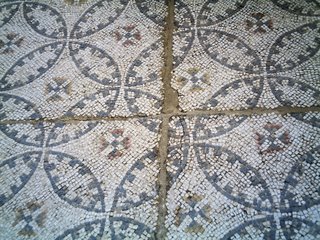Puppet (Ancient Hammamet)
 Puppet was a city important in the time of Marcus Aurelius and Commodius. It was renowned in those times for its regular and thermal baths (hence the name “hammam,” which means bath in Arabic). An affluent village with many opulent homes, it never became a large city. In the 900s a fort was constructed for the defense of the Tunisian coasts. In the 12th century, Roger II of Sicily conquered the city, took possession of the fort, and built the town walls. In the 16th century, the Turks took control, followed by beys, and French colonization. In the meantime, Puppet became Hammamet, the city of baths.
Puppet was a city important in the time of Marcus Aurelius and Commodius. It was renowned in those times for its regular and thermal baths (hence the name “hammam,” which means bath in Arabic). An affluent village with many opulent homes, it never became a large city. In the 900s a fort was constructed for the defense of the Tunisian coasts. In the 12th century, Roger II of Sicily conquered the city, took possession of the fort, and built the town walls. In the 16th century, the Turks took control, followed by beys, and French colonization. In the meantime, Puppet became Hammamet, the city of baths.In the 12th century under the Hafsids, Hammamet gained some prominence. When the Spanish invaded in 1570 AD, they fortified the fort and city walls. The Muradites ruled in the 17th century.
The ruins date primarily from Roman times with some Byzantine mosaics. One of the most well known portions has been removed to the Bardo museum. The Getty Museum is involved in protecting some of the rest. Puppet was a stop on the Roman road, which linked Carthage to present-day Sousse.


0 Comments:
Post a Comment
<< Home